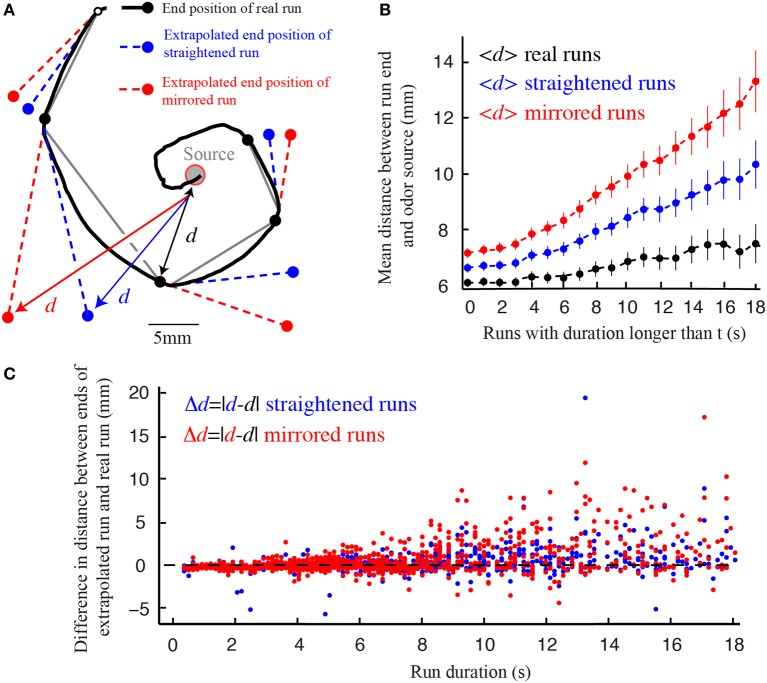Figure 6.
Weathervane corrections improve reorientation. (A) Real trajectory of a wild type larva for which the experimentally observed end position of each run (black) is compared with the extrapolated end position of virtual runs: (1) fictive run whose path is straight in the direction tangent to the beginning of the real run (blue) and (2) mirrored run curling in the opposite direction of the real run (red). The distances (d) from the odor source to the end point of each run are calculated. (B) Average distances between the source and the end position of the real, straight and mirrored runs, as a function of the cumulative run duration (t). On average, real runs bring the larva closer to the source for any run duration. Straight runs lead to better performances than mirrored runs. Error bars represent s.e.m. (C) Source-to-endpoint distance differences between the real and virtual runs, both for straight runs (blue dots) and mirrored runs (red dots). Individual events are ranked by duration (N = 1236 runs for wild type larvae in the presence of odor). Individual virtual run events rarely do better than real runs subjected to weathervaning.

